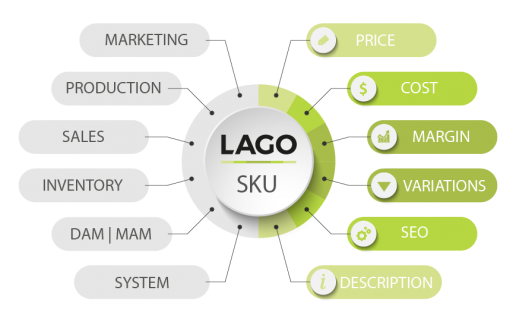PIM-Point Accuracy
When a retailer has hundreds of thousands of SKUs and over 2,000 stores, how can it leverage all that data effectively—and profitably—in its public marketing efforts?
Enterprise databases are not built from scratch. They certainly do not spring into existence fully-formed, complete with a high-profile launch event. Rather, these dinosaurs of the IT world evolve slowly—and successfully—from their primordial ancestors. Engineered to handle huge volumes of complex data, such systems are powerful enough to support large, complicated businesses.
This awesome power comes at a cost, however. Because they have evolved from previous, often arcane systems, enterprise databases are notoriously slow to adapt to changing market conditions and disruptive new technology.
So Many SKUs, So Little Time
Such is the case with Product Information Management or PIM systems. When a company manufactures or sells a product, data from a PIM are used to keep track of every aspect, from colors, size variants, and part numbers to serial numbers, optional accessories, and specifications. Each item, known as a Stock Keeping Unit or SKU, also has pricing information, inventory levels and locations, manufacturing details, and a host of marketing data. The latter, usually product descriptions, photos, and even videos, are kept in a separate but somehow related database called a Digital Asset Management or DAM system.
That’s a lot of data. For each SKU, there may be dozens or even hundreds of data points. Usually, these not all in the same database but spread over several related but very different systems. Each has its own, important business purpose and each much share information in order to manage that particular product. One particular department—product marketing—must access almost everything related to a particular SKU.
Now, multiply that problem by 400,000.
Home improvement retail giant Lowe’s handles that number of products and more, selling them from any of its 2,000 stores—plus its online sales portal. To market this vast array of products successfully, the company must find a way to leverage millions of data combinations—and do so in a way that guides the shopper to just the right product at just the right price.
Up to the Challenge
In August, Multichannel Merchant published a case study describing how Lowe’s and PureRED (Lowe’s digital agency) were able to solve a complex, data-intensive marketing problem — the retail circular. Using the LAGO system from Comosoft, product marketing managers and designers were able to identify and prioritize SKUs for a campaign and, using data from both PIM and DAM systems, import each product into a well-designed Adobe InDesign template.
Much of the detailed circular production work (e.g., formatting and populating tables, finding the right product image) became highly automated. Pricing and other data were linked to the original data source, so a last-minute change to the latter would automatically update the former—right up to the moment the file was generated for the printer. The potential for errors was greatly reduced.
The massive data juggling act at Lowe’s is even more impressive when you consider that each individual store circular, although similar in overall design, is unique in terms of featured products and sale prices. Multiply each data-intensive printed circular by the over 2,000 Lowe’s stores that use them on a daily basis.

The Digital Shift
The PIM/DAM dilemma would be hard enough if printed circulars were the only marketing channel. (LAGO is also used for other complex, versioned print products, notably catalogs.) However, digital marketing—especially mobile apps—have upended the plans of most retail marketers. A digitally produced circular ad must not only be attractive, informative, and easily findable, it must also be an “E-Z button” for buying the item.
Think about it. An ad for a screwdriver set on a store’s mobile app not only has to show the user what it is, and how much it costs (with prices changing at any moment), but also similar items, customer reviews, and whether it’s in stock or available for delivery.
That’s a lot of data. Fortunately, as the case study shows, the same PIM/DAM data acrobatics used to streamline print circular production could be repurposed to populate the Lowe’s mobile app.
Reaching the Target
By definition, product marketing must be nimble and responsive to consumer habits and preferences. Online and mobile tools are ideal vehicles for connecting with today’s customers. However, only if the massive amounts of product data can be accurately and cost-effectively managed—behind the pretty face of an ad or app—can the targeted message reach the consumer.